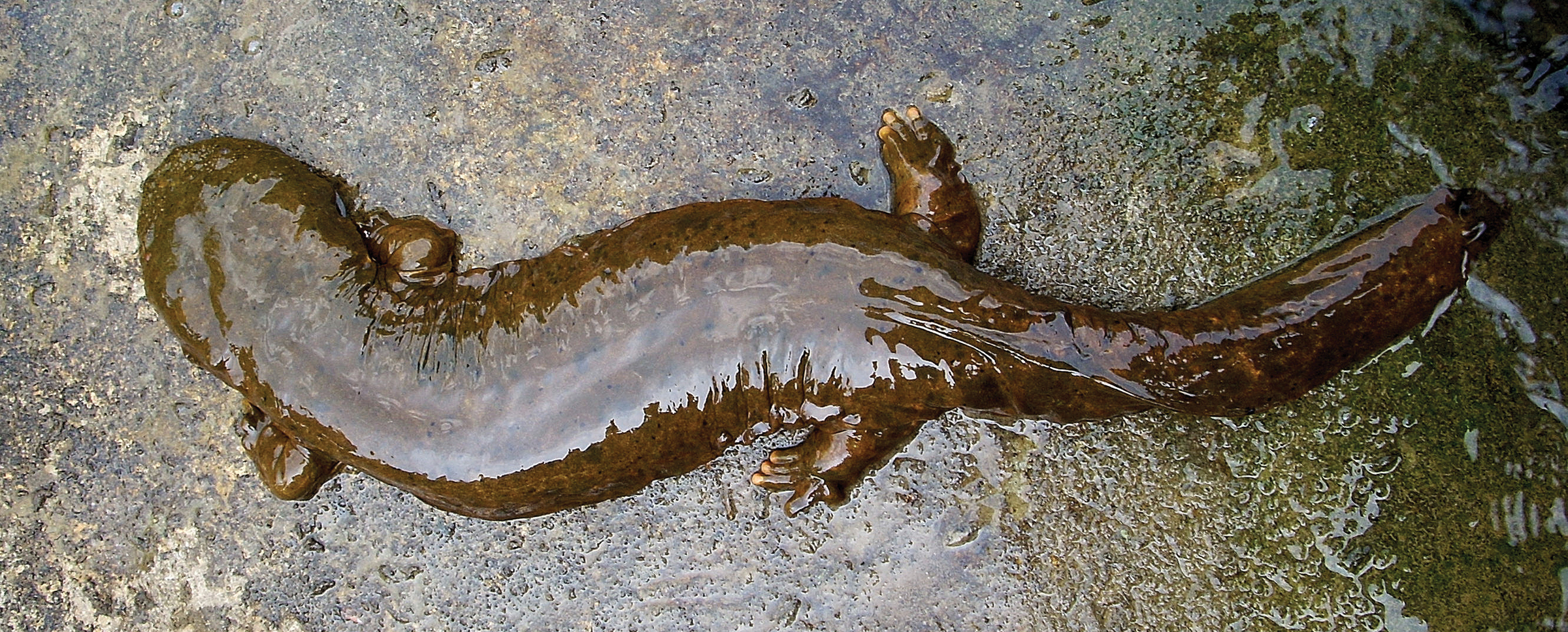Class Year: 2018
Hometown: Springfield, Ohio
Internship: The Wilds Scholar Internship
Location: Cumberland, Ohio
Hey everybody! I'm Courtney Dover, a sophomore in the zoo and conservation science program at Otterbein. This summer, I will be spending 10 weeks living at The Wilds as a wildlife ecology intern. All of the wildlife ecology interns got to pick a project to work on this summer. I am very excited to start my project because I will be doing predator avoidance training with head-started hellbenders! Now, let me explain what this means.
Eastern hellbenders (Cryptobranchus allegiensis) are a giant species of salamander native to the Eastern United States. They are completely aquatic and exchange gases through their skin. The Wilds is one of the few facilities dedicated to conservation of the species. We have hundreds of young hellbenders at the Wilds, and one of my tasks this summer is to help care for these little guys as well as researching them. The hellbenders at The Wilds are "head-started", meaning they have been cared for from eggs to larvae and to juveniles. Many of these animals would have been prey when they were young in the wild. We are giving them a head start to help ensure survival.

Photo courtesy of Purdue~Help the Hellbenders
When any animal is raised in human care, there is concern that it will not know how to behave in the Wild or that the behavior will differ from an animal raised in the wild. This applies to hellbenders as well. Larval and even juvenile hellbenders can fall prey to many different animals in the wild. When hellbenders are released into the wild, a big concern is that the young have not been exposed to these natural predators and will not know how to behave when a predator comes near them. It has been hypothesized that the larval hellbenders lack of predator avoidance skills is one of the main reasons for death in individuals released into the wild.
This is where I come in! Apprentice Tucker and I will be conducting research on predator avoidance training of the larval hellbenders at The Wilds. I will give more details on the procedure later, but for now I can say that we will be using a combination of mink gland secretions and an otter puppet to train the hellbenders.
Another cool aspect of the internship is that the wildlife ecology interns get to venture out into the world and survey for wild hellbenders! I was in the first group that got to go all the way out to West Virginia to search for these awesome salamanders under the giant rocks in creeks and streams. The site that we went to was not promising, as a hellbender had not been found there for over 50 years. But, Joe Greathouse, my advisor, was able to do eDNA testing to see if hellbender DNA could be found in the water of the site we were surveying. His test was positive, which meant hellbenders were in the creek, but we could not find any. We were lucky to find a mudpuppy, which is another species of large salamander similar to hellbenders. Enjoy some pictures of our trip!

Searching for hellbenders under rocks and using nets to block their escape routes.

Me holding the mudpuppy we caught. Since I was the one who caught him, we named him Courtney.

A close up of this cutie. After we took a few pictures and measurements, we released Courtney back under his rock.
Also, here are some cool pictures of the other animals housed at The Wilds.
Budgies!
Przewalski's wild horses
Sichuan takin
Ostrich
Reticulated giraffe
Pere David's deer
Bactrian Camel. The babies name is Wednesday (its a hump day joke). Also this is a great picture of her mother shaking drool everywhere. How graceful and majestic.


